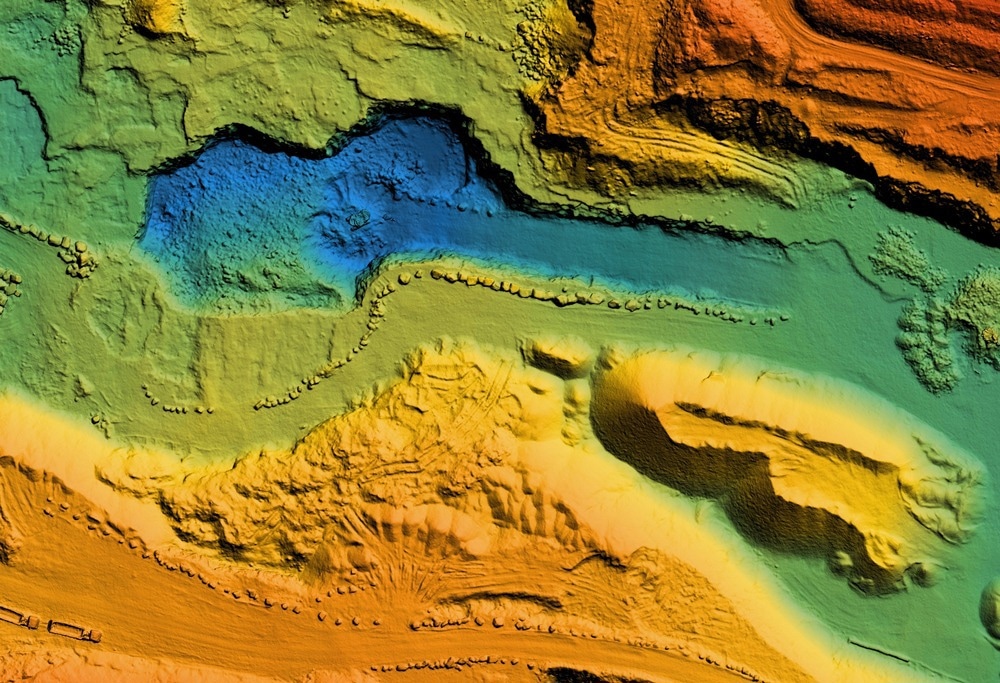Light detection and ranging (LiDAR) is an active remote sensing system often accompanied by various noises. To find the most suitable denoising method for LiDAR signals, a study published in Sensors compared various single and joint denoising algorithms. The result indicates that the WT-VMD joint algorithm has the best noise reduction effect, the highest signal-to-noise ratio, and can increase LiDAR signal inversion accuracy.

Study: New Denoising Method for Lidar Signal by the WT-VMD Joint Algorithm. Image Credit: Ungrim/Shutterstock.com
Significance of LiDAR
LiDAR is a powerful remote sensing technology commonly used to monitor environmental and atmospheric factors such as aerosol, cloud, visibility, and boundary layer. It offers accurate and consistent results, a wide detection range and high temporal and spatial resolution.
Influence of Noise on LiDAR
The intensity of the LiDAR echo signal declines steadily with increasing detection distance. The LiDAR echo signal at long distances entirely submerges in the noise due to the influence of the thermal noise of the amplifier, solar background light, and other elements in the detection process.
The echo signal cannot gather sufficient information at a long distance because of the influence of noise on the detecting process.
As noise contamination influences signal processing and the effective detection range of the LiDAR, denoising the LiDAR signal is becoming a critical area of research.
Current LiDAR Signal Denoising Techniques
The noise in the LiDAR data has a continuous amplitude and random phase in the time graph, making it a typical non-stationary, non-linear signal. There are currently three popular signal denoising techniques for this type of signal processing: wavelet transform (WT), variational mode decomposition (VMD), and empirical mode decomposition (EMD).
These techniques effectively remove weak signal noise, and a few studies have demonstrated that they can cope with LiDAR signal noise.
All denoising techniques can efficiently eliminate most noise information when the number of cumulative pulses is high, i.e. the signal-to-noise ratio (SNR) is high. However, as the cumulative pulse drops (SNR decreases), the disparity between the noise reduction capabilities of various approaches rises.
Therefore, researchers combine various techniques and algorithms to overcome the limitations and enhance the performance of single denoising algorithms.
Comparative Experiment Analysis on Denoising Algorithms
This research used the joint algorithms WT-VMD and WT-EMD based on the single denoising algorithm EMD, WT, and VMD to determine the best denoising technique for LiDAR signals.
A simulated LiDAR carried out the comparative denoising experiment. The simulated signal with noise was separated into two categories, one with no pollution and the other with cloud and aerosol distribution.
Three distinct experiments were carried out with 1000, 100, and 50 cumulative pulses, each corresponding to a unique input SNR value. The algorithm's effectiveness at reducing noise was measured in terms of its root-mean-square error (RMSE), signal-to-noise ratio (SNR), and smoothness.
Important Findings of the Study
The experimental findings demonstrate the variation in performance of the denoising techniques under evaluation.
The WT approach is more suited to high SNR conditions and can recover the signal structure effectively. However, the data exhibits significant oscillations in the far field and has poor curve smoothness after denoising.
When there is no pollution, the EMD approach works well but loses the finer details of aerosol and cloud dispersion in the atmosphere. Under various noise levels, the VMD approach has stable denoising capability. Although it has a more positive overall impact than WT, there can be an endpoint issue.
Combined algorithms typically outperform single algorithms. The majority of the noise can be removed using WT denoising while maintaining the signal's properties, and the remaining noise can subsequently be thoroughly removed using EMD/VMD. WT-EMD can occasionally cause signal distortion because mode aliasing in EMD at high SNR is possible.
In denoising evaluation metrics, VMD-related approaches outperform EMD-related methods in terms of RMSE, SNR, and smoothness. Among them, the WT-VMD approach has clear advantages over the others. It offers the best noise reduction effect as it has the lowest RMSE, highest SNR, and a relatively tiny smoothness indicator regardless of the noise intensity.
When applied to real-world LiDAR data, the suggested approach can significantly reduce signal noise as the detection range increases, leading to more precise aerosol extinction coefficient inversion.
WT-VMD denoising also produces superior atmospheric inversion results compared to the traditional median and averaging filtering methods. The experimental findings confirmed the viability of the WT-VMD approach based on SSA for real-world LiDAR signal processing.
Reference
Wang, Z., Ding, H., Wang, B., & Liu, D. (2022). New Denoising Method for Lidar Signal by the WT-VMD Joint Algorithm. Sensors. https://www.mdpi.com/1424-8220/22/16/5978/htm
Disclaimer: The views expressed here are those of the author expressed in their private capacity and do not necessarily represent the views of AZoM.com Limited T/A AZoNetwork the owner and operator of this website. This disclaimer forms part of the Terms and conditions of use of this website.